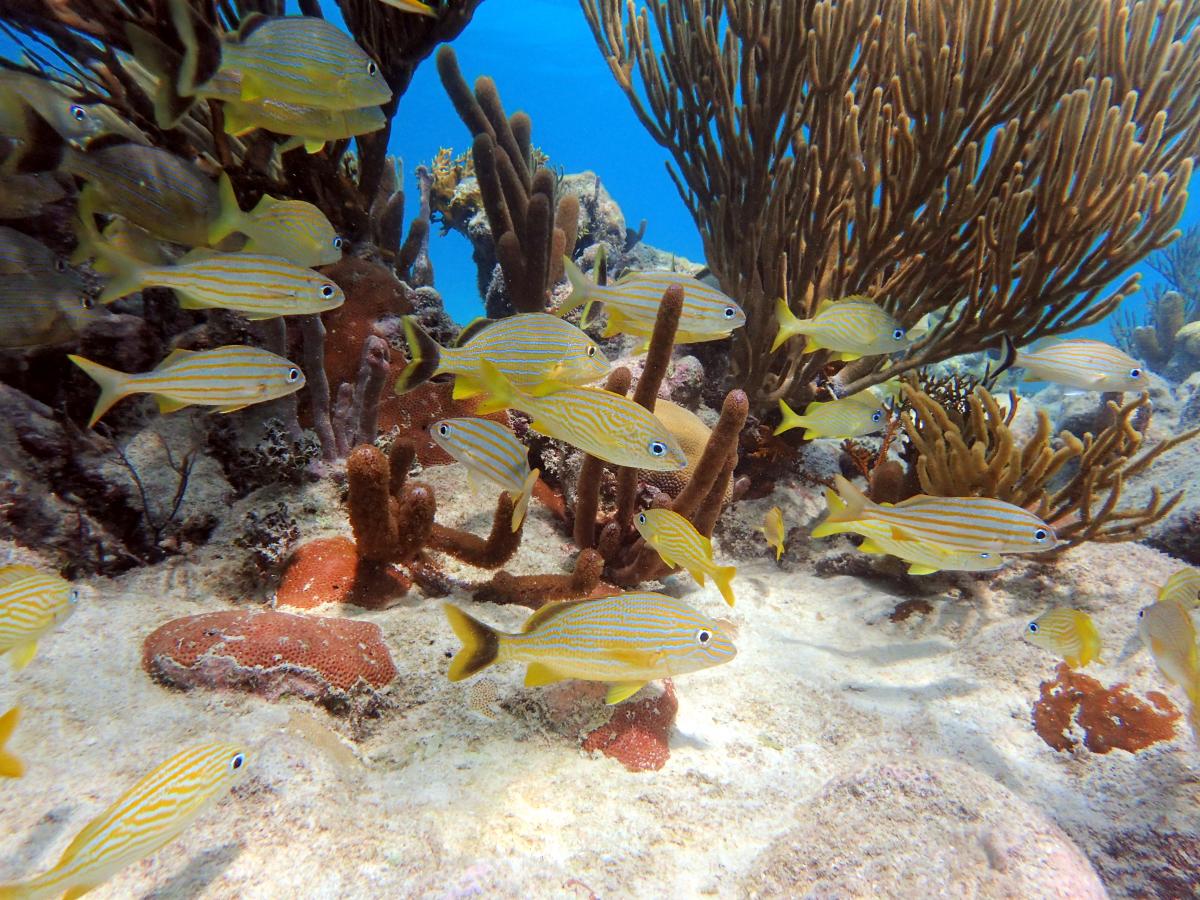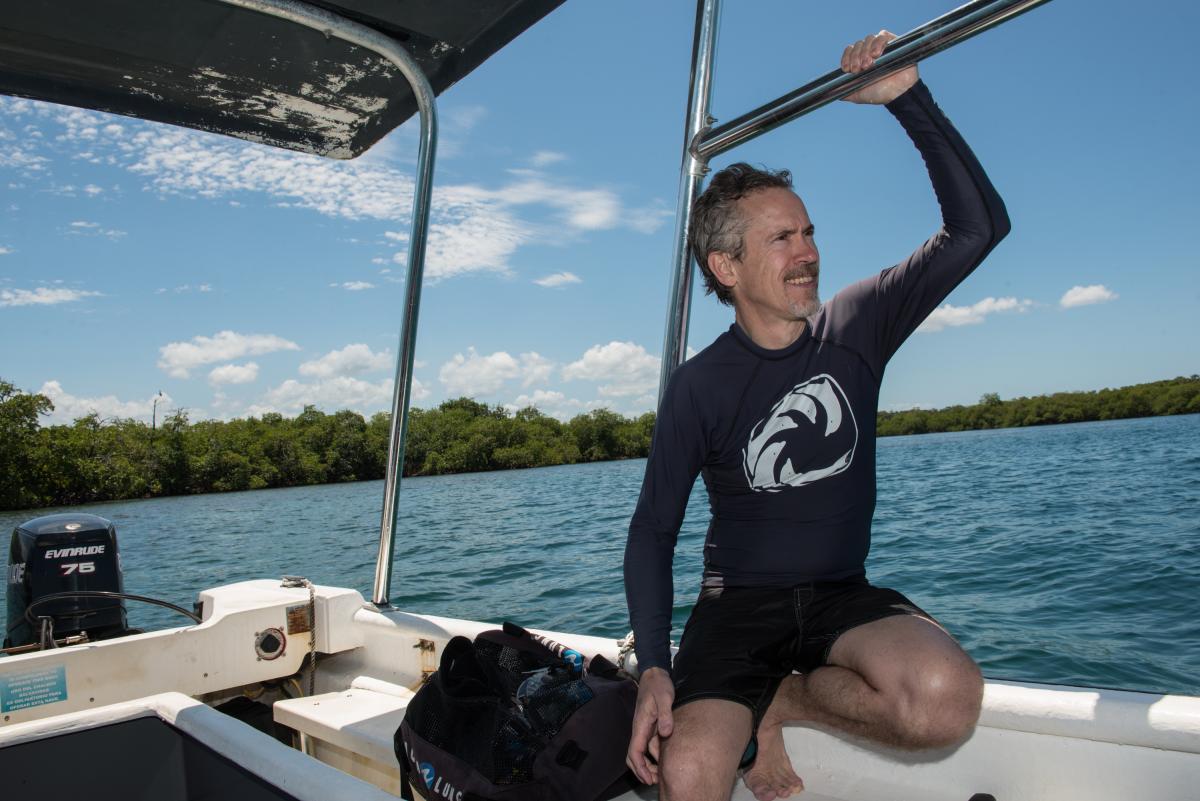In the Wild, Diversity Determines Ecosystem Production As Much As Climate and Nutrients

Biodiversity is proving to be one of humanity’s best defenses against extreme weather and rising temperatures. In past experiments, diversity has fostered healthier, more productive ecosystems, like shoreline vegetation that guards against hurricanes. However, many experts doubted whether these experiments would hold up in the real world. A Smithsonian and University of Michigan study published in this week’s issue of Nature offers a decisive answer: Biodiversity’s power in the wild does not match that predicted by experiments—it surpasses it, in some cases topping even the effects of climate.
“Biodiversity is not just a pretty face,” said Emmett Duffy, lead author and marine ecologist at the Smithsonian Environmental Research Center in Edgewater, Md. “Protecting it is important for keeping the ecosystems working for us, providing food, absorbing waste and protecting shorelines, which is important right now.”

In the past, ecologists primarily tested biodiversity’s impact through carefully controlled experiments: planting one or several species in plots while ensuring everything else remained the same, and observing which plots grew best. But those experiments in many ways do not mimic reality. To uncover biodiversity’s power in the rough and tumble of wild nature, biologists synthesized data from 67 observational studies of nature in the field, covering grasslands, forests, freshwater environments and marine environments. The studies spanned all seven continents and contained data from over 600,000 sampling locations around the world.
In every type of ecosystem the team analyzed, biodiversity went hand-in-hand with more flourishing ecosystems. More diverse systems had higher biomass, and the effect was stronger in natural studies than has been predicted from controlled experiments. This connection held true even after the team controlled for other environmental factors, like temperature and nutrients.
More strikingly, in nature biodiversity topped climate as the most powerful predictor of biomass production in roughly half the studies, and it topped nutrients in two-thirds of them.
“We now have strong evidence from models, controlled experiments, and studies of natural systems—all of which agree that ecosystems with a greater variety of life are more productive than those with less biological diversity,” said Casey Godwin, a co-author and ecologist at the University of Michigan. “Therefore, if we want to maintain the productivity and functioning of Earth’s ecosystems, conserving their biodiversity is critically important.”
The scientists suspect there are a couple possible explanations for biodiversity’s power in nature. The first is sheer numbers. Natural ecosystems already tend to have vastly more species than most experiments. With so much firepower, it is more likely that some combination of species best suited to an area’s conditions will flourish. But even when the scientists ran the analysis under a hypothetical scenario—imagining what would happen if natural systems had fewer species, like the experiments did—natural systems still had an edge. This second advantage may come from other types of diversity in nature beyond species. Differences in light, moisture or other variables—differences scientists try to screen out meticulously in experiments—exist all over natural communities. These differences could have given diverse communities more opportunities to thrive in the natural world, empowering the entire ecosystem to thrive more as well.
“Experiments have been incredibly valuable for showing us how and why biodiversity can influence basic ecological processes like the production of biomass, which is important to people because it produces the oxygen we breathe, makes the food we eat and purifies the water we drink,” said co-author Brad Cardinale, an ecologist and University of Michigan professor. “But experiments are probably too small and too short to reveal the full importance of biodiversity in real ecosystems, where plants and animals have evolved and interacted with each other for thousands of years.”
Biodiversity’s surprising power makes the mission to protect it about more than saving species for their own sakes, the scientists said. Preserving life in all its diversity is vital not only for conservationists, but also for the health of businesses and communities.
“The variety of life on Earth is critically important to our future,” Duffy said. “We can’t expect healthy ecosystems to rebound when we knock out a species and then take away the stressor. The community of species are doing different things, and by interacting they make the ecosystem work.”
Video and images are available at the Smithsonian Newsdesk (http://newsdesk.si.edu) or by contacting media relations coordinator Kristen Minogue. The abstract is available online at https://www.nature.com/nature/journal/vaop/ncurrent/full/nature23886.html. For a full copy of the paper, for video and images, or to speak with the authors, contact Kristen Minogue at (443) 482-2325 or minoguek@si.edu.
